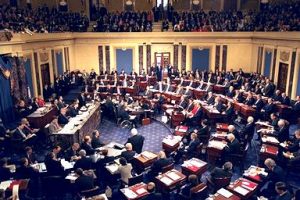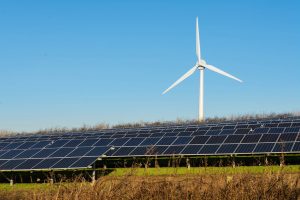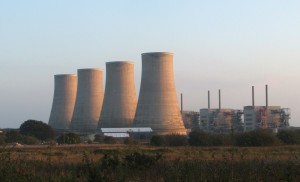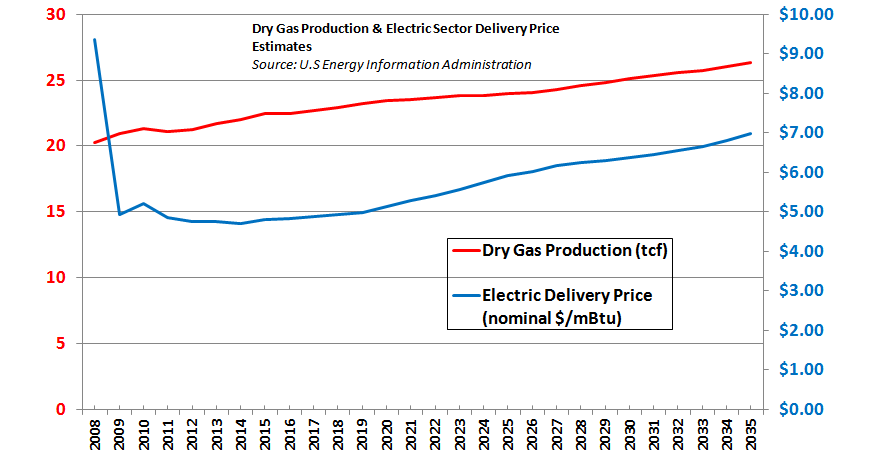14 item(s) were returned.
On Friday, GOP negotiators released their Conference Report (Report) reconciling House and Senate versions of the Tax Cut and Jobs Act. The tax bill would affect U.S. energy policy in several ways, impacting electric vehicles (EV), the clean energy industry, as well as oil & gas operations. Now that a deal is complete, two significant energy-related items, the Base Erosion Anti-Abuse Tax and the opportunity to drill in the Arctic National Wildlife Refuge, are likely to become law very soon. Base Erosion Anti-Abuse Tax: To offset U.S. tax liability, multinational companies often make payments to overseas affiliates and also purchase… [more]
View InsightDirector, Energy Democracy Initiative
Institute for Local Self-Reliance
A federal policy enacted nearly 40 years ago has breathed life into an ongoing argument at the Minnesota Public Utilities Commission over utility opposition to a wind and solar hybrid project proposed in the rural city of Red Lake Falls. The law, known as PURPA, was designed to promote local renewable generation by requiring utilities — even monopolies — to buy their electricity from qualified distributed and renewable facilities that can provide power at prices that roughly match the utilities’ “avoided cost” for electricity. But even after all this time, questions loom over exactly how to calculate that value. Utilities… [more]
View InsightPresident-elect Donald Trump has nominated Oklahoma Attorney General Scott Pruitt as Administrator of the Environmental Protection Agency (EPA) and former Texas Governor, Rick Perry, as the next Secretary of the Department of Energy. Some observers have noted that the nominations of Pruitt and Perry suggest that Mr. Trump intends to follow through on campaign promises to pursue energy policies supporting the development of fossil fuels. Pruitt and Perry each hail from states with strong oil and gas industries and both are known for their at-times skeptical views regarding the EPA and DOE, respectively. Mr. Pruitt describes himself as “a leading… [more]
View InsightPresident
Kadak Associates, Inc.
There is an inconvenient and uncomfortable truth that nuclear energy is a significant non-CO2 source of electrical power in the U.S. Despite the dramatic expansion of solar and wind, these alternative forms of energy only provide 15% of non-CO2 emitting power nationwide. Nuclear energy on the other hand, provides 63% of all CO2-free sources. Often when a utility decides to shut down a nuclear plant it is replaced by natural gas. But replacing nuclear with “clean” natural gas only adds to the global CO2 load. In fact, each 1,000 megawatts of nuclear power replaced by natural gas adds 3.6 million… [more]
View InsightDomestic natural gas production continues to expand, while natural gas spot prices are at historic lows. Many utilities are responding to these changing market dynamics by building gas plants or “fuel-switching” existing power plants from more expensive fuels to gas. As a result, coal generation continues to fall. Due in part to price competition with natural gas, some Congressional “clean energy” subsidies may not be renewed. EIA projections suggest that domestic production will continue to increase, and that natural gas prices faced by electric utilities will remain below $7.00/mBtu, through 2035. [Source: EIA] What does near- to mid-term domestic natural… [more]
View InsightTo date, no offshore wind farms have operated in the United States. However, several projects under consideration or development could change that. In February, the federal government completed an environmental review of designated “wind energy areas” off the mid-Atlantic coast, and found that lease sales for wind energy would not create environmental problems. This finding may facilitate the sale of wind energy leases off the coasts of Maryland, Virginia, New Jersey and Delaware as early as this year. [New York Times] The Cape Wind Project, a wind farm off Massachusetts’ Cape Cod, could be the first operational offshore wind energy… [more]
View InsightA recent op-ed by noted academic Bjorn Lomborg questions the idea that renewable energy – wind, in particular – is up to the task of mitigating climate change. Renewables are not cost-competitive with traditional energy sources, he argues; and because renewables are intermittent and must be backed-up by base-load or peaker power plants, their true costs per kWh is often understated and their CO2 reduction potential overstated. Much of Lomborg’s argument focuses on the UK’s plan for a 20% reduction in CO2 by 2020 that, according to the op-ed, would require that wind account for 31% of the country’s electricity… [more]
View InsightLast week The Economist called attention to growing demand for rare earth minerals, their importance in clean energy technologies, and rising tension over their global supply. Two of these minerals – dysprosium and neodymium – are essential components of the magnets used in wind turbines and electric motors. According to The Economist, for these technologies to play the role expected of them in reducing CO2 emissions, world supply of neodymium and dysprosium would need to increase “more than 700% and 2,600% respectively during the next 25 years.” China, which produces around 90% of the world’s rare earth minerals, has recently… [more]
View Insight“Jobs, the Energy Sector, and Government” February 16th, 2012 Capitol Hill, Washington, DC Opening Remarks: WILLIAM SQUADRON, President, OurEnergyPolicy.org Speakers: KENNETH P. GREEN, Resident Scholar, American Enterprise Institute JIGAR SHAH, CEO, Carbon War Room ROBERT H. TOPEL, Professor, Urban and Labor Economics, Booth School of Business, University of Chicago YOSSIE HOLLANDER (moderator), Founder and Chairman, OurEnergyPolicy.org MR. SQUADRON: Thank you all for coming. There’s still a few people outside coming in, in a little bit of a line, but we should get started, because I know all of you have busy schedules, and we appreciate your taking the… [more]
View InsightThe New York Times recently published an article outlining the role of energy storage in facilitating increased adoption of renewable energy. The article highlights two companies – SolarReserve and BrightSource – that will open and operate solar thermal storage plants over the next several years. These plants will use the daytime sun to heat water and salt. The latent heat will then be used to power traditional electric turbines after the sun has set. The Energy Storage Council lists the following among the uses of energy storage: Enabling “renewables, solar or wind, to store energy generated during off-peak hours for… [more]
View Insight



